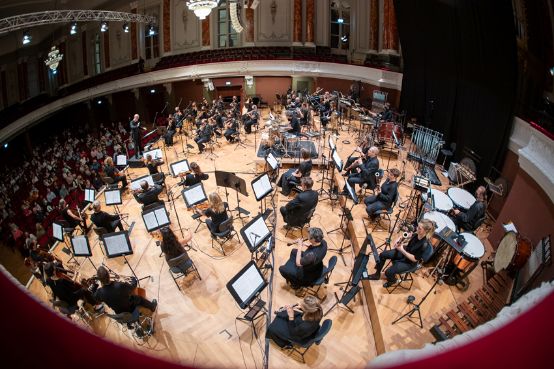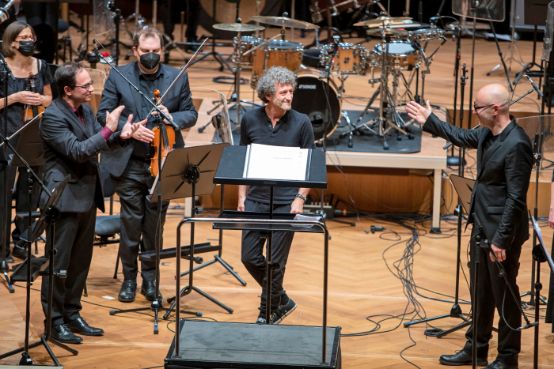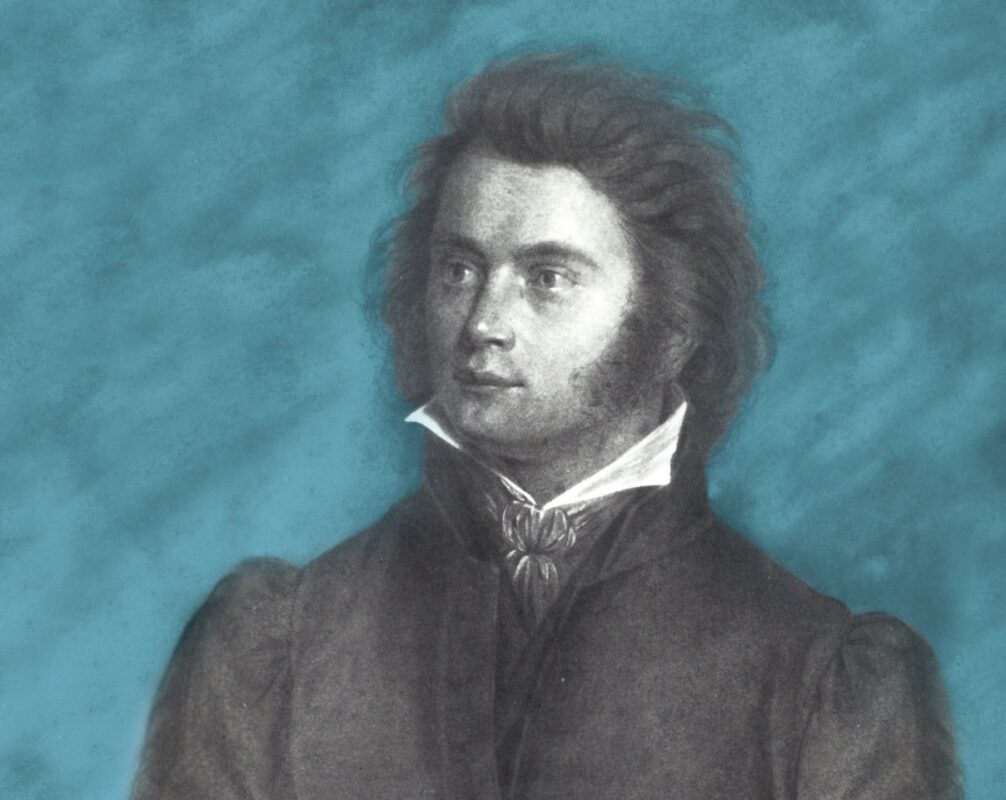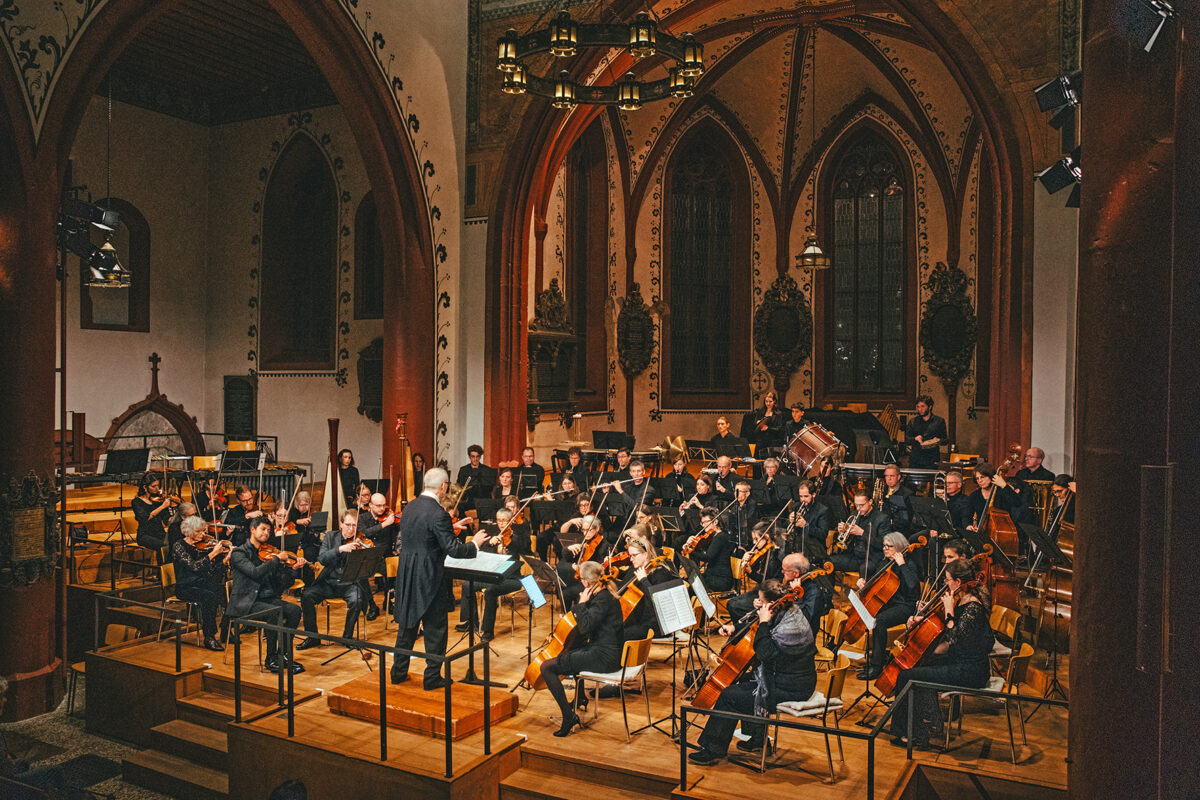Zappa, Varèse, Waespi: When rock and classical music meet
Surprising programs are part of the Basel Sinfonietta's DNA. The concert with music by Frank Zappa and a new work by Oliver Waespi is therefore a perfect fit.

For 41 years, the Basel Sinfonietta has been committed to performing contemporary music in unusual formations and concert formats alongside the familiar and the unknown. The orchestra is also sticking to this premise at the end of the 2020/21 season. The program at Stadtcasino Basel includes not only three works by Frank Zappa, the rock provocateur who died in 1993, but also the world premiere of a drumset concerto by composer Oliver Waespi - with Swiss percussionist Jojo Mayer as the soloist.
In the run-up to the concert with the title Jojo, Zappa and rock'n'roll conductor Baldur Brönnimann revealed that it was originally supposed to take place outdoors. "We wanted to combine Waespi with works by Bernhard Gander and others, but in the end we had to reduce the size of the orchestra and play without a break." This is a good illustration of the challenges facing the cultural sector as a result of the pandemic. Nevertheless, thanks to the flattening of the infection curve, the evening can finally be performed in front of an audience again, which Daniela Martin, Managing Director of the Basel Sinfonietta, describes as an "exciting moment" during her introduction. She sums up: "It was a season of ups and downs, but we mastered it."
Frank Zappa and Edgar Varèse
The performance opens with Dupree's Paradise from Zappa's 1984 album The Perfect Stranger. The approximately seven-minute piece, which, as the composer said, was set in 1964 during an early morning jam session in a Los Angeles bar, presents itself like an experimental and emphatically expressive film soundtrack: spring-like and optimistic moments are quickly followed by dark excursions that are sometimes reminiscent of George Gershwin. The focus is on the constantly changing rhythms, which rise and fall like a conversation that slowly gets going, then picks up speed, only to peter out again. Until the whole thing ends with a new build-up, expansive instrumentation and a bang.
Then it is the turn of Get Whitey. This work from 1992 focuses on complex rhythms and polyrhythmic structures and is like the background music to an unexpected encounter. One in which the clarinet, harp and acoustic guitar, for example, first shyly sniff at and express themselves, but then become increasingly self-confident and demanding. Before the Sinfonietta concludes this part of the concert, Brönnimann talks about Zappa's 15th birthday and his wish to be allowed to make a phone call to his role model Edgar Varèse. The call did indeed go through, but the composer was not at home. However, this in no way detracted from Zappa's lifelong fascination with Varèse's work. This also The Perfect Stranger from 1994. "It has many echoes of Varèse's piece Déserts on", confirms Brönnimann. According to Zappa, the work is about a vacuum cleaner salesman who has a debauched conversation with a careless housewife. This manifests itself in almost drunken motifs, which meet repeatedly surging western motifs and feature plucked string instruments and timpani beats. It is a highly successful and curious confrontation between serious and popular music, in which the rhythms are subjected to a constant game of cat-and-mouse - challenging and rewarding at the same time.
Jojo Mayer and Oliver Waespi
While the stage is being rearranged for the last part of the program, composer Oliver Waespi and drummer Jojo Mayer join the conductor to talk about Frank Zappa and their own collaboration. It turned out to be a great experience, says Brönnimann. Especially because the intersection of rock and classical music came into play. When asked how he approached the composition of his latest piece Volatile Gravity Waespi explains: "Like many musicians, I'm not particularly good at dancing, but I feel like a rhythm person." His three-part work for drumset and orchestra is a kind of musical exploration of a city. The form of the piece is articulated along an imaginary urban space with several centers - spanned between built and unbuilt, structured and open areas. This is reflected live in the first part entitled High Frequency Trading which switches from 0 to 100 in no time at all and provides both dynamism and drama.
At first, Jojo Mayer's drums are almost drowned in the orchestral sea, but thanks to his perseverance and virtuosity, the New York-based artist increasingly manages to play himself into the spotlight and make use of the improvisational opportunities that present themselves. At times, the music seems like a high-wire act without a safety net: Mayer's patterns dance above the undulating waves that the orchestra constantly throws up. You can sense that shipwreck is just a stroke of the oars or drums away, but the challenge is mastered together. This is also because Mayer knows how to take up the orchestra's interjections in his solos and respond to them with force and precision. The clashing forces of orchestra and soloist are not only on an equal footing, but the participants succeed in finding each other - and uniting - the longer they play together. The result is pulsating music that draws on rock and classical music in equal measure and is able to maintain the created tension right to the end.
-

Oliver Waespi, Jojo Mayer and Baldur Brönnimann (front, from left). Photo: Zlatko Mićić/Basel Sinfonietta








